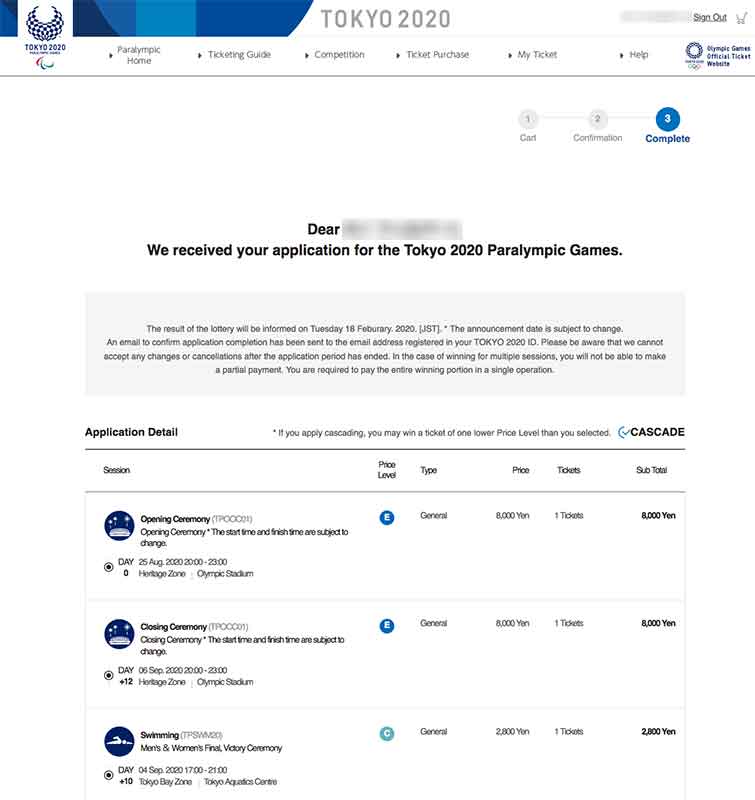The new 2020s decade starts out as an exciting Olympic year. Little did anyone know how things would soon tragically unfold worldwide. The coronavirus pandemic forces the historic first-time postponement of the Games and causes much uncertainty, anxiety, and divisiveness. The media becomes a super spreader of negativity. Organizers are forced to reinvent the Games to accommodate the pandemic.
Updated: Nov. 5, 2023
Compiled and written by Philbert Ono (former TOCOG employee). Preserving Tokyo 2020 history and memories.
Go to:
Jan. 2020 | Feb. 2020 | Mar. 2020 | Apr. 2020 | May 2020 | June 2020
July 2020 | Aug. 2020 | Sept. 2020 | Oct. 2020 | Nov. 2020 | Dec. 2020
Other years:
2011 | 2012 | 2013 | 2014 | 2015 | 2016 | 2017 | 2018 | 2016 | 2017 | 2018 | 2019 | 2020 | 2021 | Olympics | Paralympics | Venues | 2022
Abbreviations
IOC: International Olympic Committee
IPC: International Paralympic Committee
TOCOG: Tokyo Organising Committee of the Olympic and Paralympic Games
TMG: Tokyo Metropolitan Government
NOC: National Olympic Committee
NPC: National Paralympic Committee
Five organizers: TOCOG, IOC, IPC, TMG, and government of Japan
WHO: World Health Organization
All venues also have a three-letter abbreviation.
🔴 Important events and milestones for Tokyo 2020.
🍀 Important developments and milestones for Games volunteers (“Field Cast”).
*Japanese personal names are written with the family name before the given name.
*Click/tap on the image thumbnail to enlarge the image.
*To correct any errors in this chronology, contact us.
JANUARY 2020
New Olympic Stadium
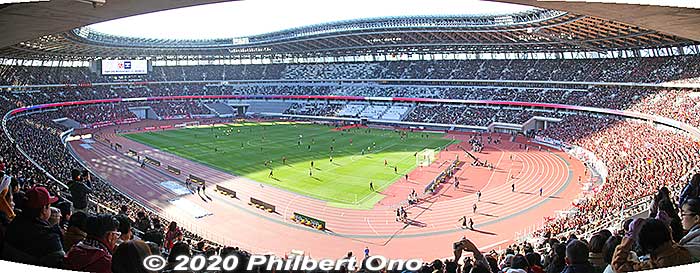
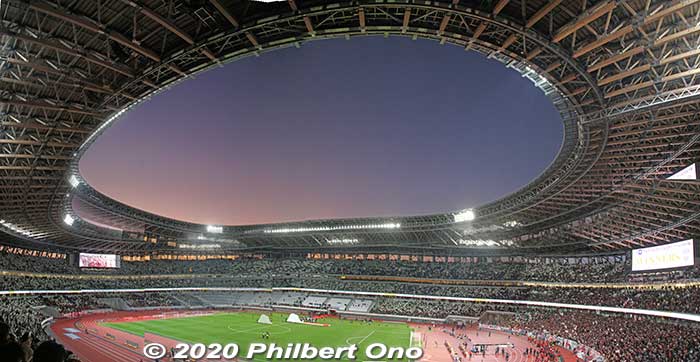
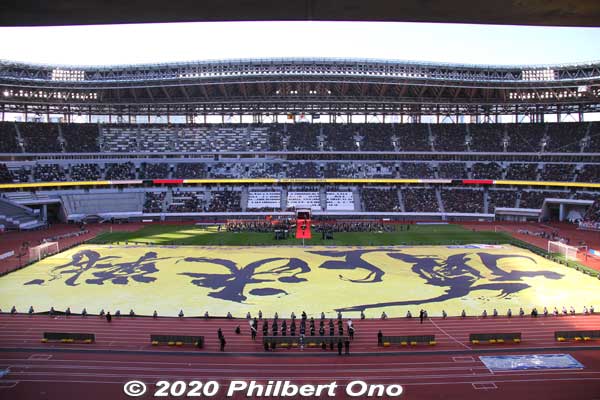
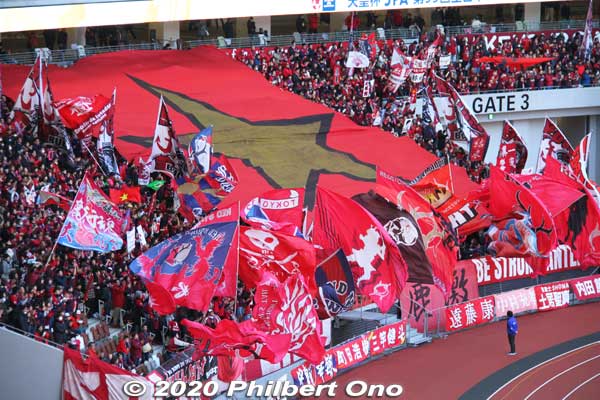
🔴 January 1, 2020: The new Olympic Stadium (OLS) holds it first sporting event with the 2019 Emperor’s Cup soccer final with Vissel Kobe defeating Kashima Antlers. The new stadium’s first and last sold-out crowd (57,000) before the pandemic hit. More photos here.
January 2–3, 2020: The 96th Hakone Ekiden collegiate relay marathon is held in front of huge crowds between Tokyo (Otemachi) and Hakone. Won by Aoyama Gakuin.
January 7, 2020: Designs of the official Tokyo 2020 art posters are unveiled. Twelve Olympic posters and eight Paralympic posters were created by the 19 artists selected by an artist selection panel in July 2019. The posters are sold as official merchandise from August 24, 2020. https://olympics.com/ioc/news/tokyo-2020-unveils-official-art-posters-to-celebrate-the-games
January 9, 2020: TOCOG shows the media a furnished, sample apartment at the Olympic Village. It features the much-talked-about cardboard beds for athletes. Claimed to be sturdy enough for someone as heavy as 200 kg.
January 15, 2020: Japan’s first COVID-19 case is confirmed in a Chinese man who had visited Wuhan, China.

🔴 January 15, 2020: The design of Tokyo 2020 Olympic and Paralympic tickets is unveiled, based on the core graphic design of the Look of the Games with five traditional Japanese colors (not Olympic colors) of Kurenai red, Ai indigo blue, Sakura cherry blossom pink, Fuji wisteria purple, and Matsuba pine green. https://olympics.com/ioc/news/tokyo-2020-ticket-designs-unveiled
January 15–29, 2020: Applications for the second and final ticket lottery for the Tokyo 2020 Paralympics are accepted online from Japan residents. The Paralympic Opening and Closing ceremonies will cost ¥8,000 to ¥150,000. Lottery results to be announced on February 18.
🔴 January 24, 2020: Six months before the start of the Olympics, giant Olympic rings (15 meters high) on a floating barge are installed at Odaiba Marine Park. Lit up in white in the evenings. Later on August 6, 2020, the rings are removed from Odaiba for maintenance and reinstalled on December 1, 2020.
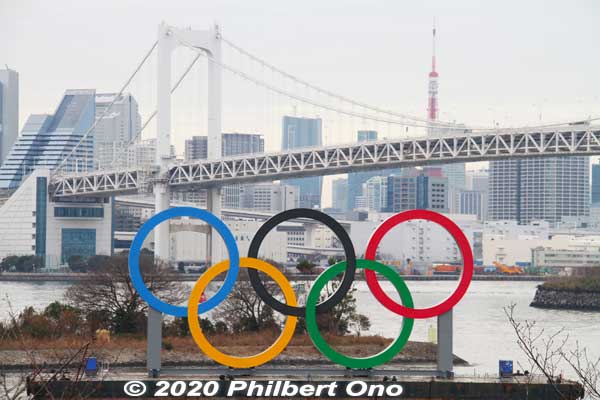
January 29, 2020: Japanese Olympic Committee (JOC) approves Sapporo‘s application to bid for the 2030 Winter Olympics. Sapporo becomes the first city to bid for the 2030 Winter Games. Three weeks earlier, the IOC announced Salt Lake City and Barcelona were also potential bidders.
Enoshima Yacht Harbor (EYH)
January 2020: To make room for the Olympics, Enoshima Yacht Harbour (sailing venue) starts to relocate about 700 sailing dinghies and other boats in the harbor to 17 locations in and outside Kanagawa Prefecture. The prefecture spends ¥1.1 billion to move most (90 percent) of the boats out of the harbor.
When the Tokyo 2020 postponement is announced two months later, 635 of the boats had already been moved out. Later, some of those boat owners asked if they could move their boats back to Enoshima for the interim. The yacht harbor said okay, upon the agreement that they would move out their boats again from January 2021. This repeated moving costs would be borne by Kanagawa Prefecture which appropriates ¥675 million for it.
As of late July 2020, about 200 of the 578 sailing dinghies moved back to Enoshima. From January to March 2021, the boats at Enoshima Yacht Harbor are to be moved out again for the Olympics. The boat owners have been cooperative and non-complaining.
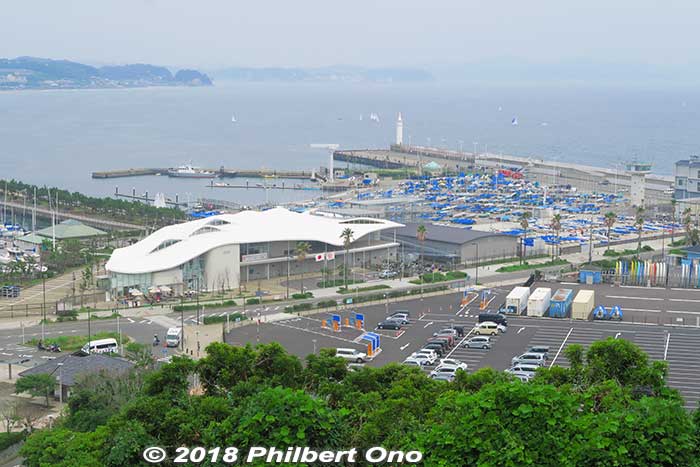
Enoshima Yacht Harbor (EYH) (sailing venue). Bird’s eye view of Enoshima Yacht Harbor orignally built for the 1964 Tokyo Olympics. The sailing competition area is toward the right.
Enoshima Yacht Harbour is at Enoshima, a small, offshore island in the city of Fujisawa in Kanagawa Prefecture. Enoshima Yacht Harbour was built for yachting at the 1964 Tokyo Olympics, so it’s another legacy venue to be used again for sailing in 2020. Enoshima is right next to Kamakura, famous for Buddhist temples and Shinto shrines.
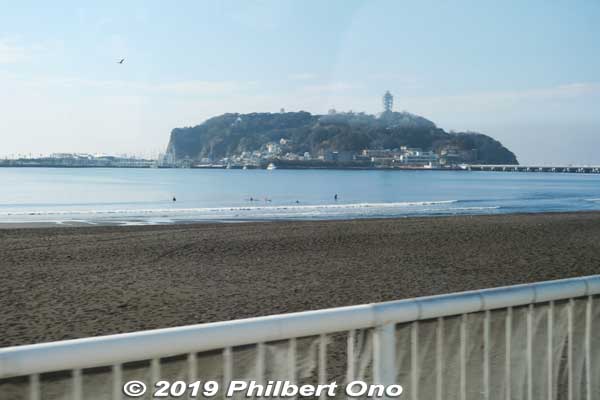
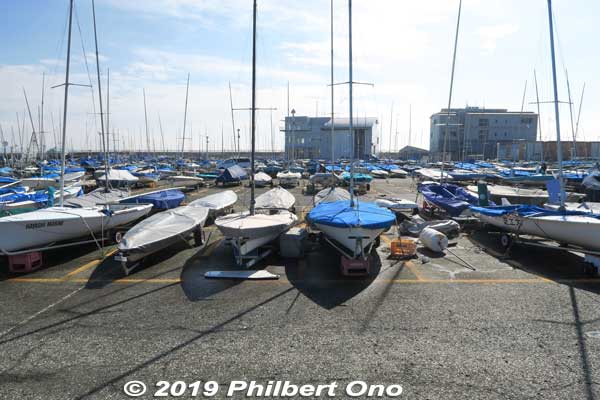
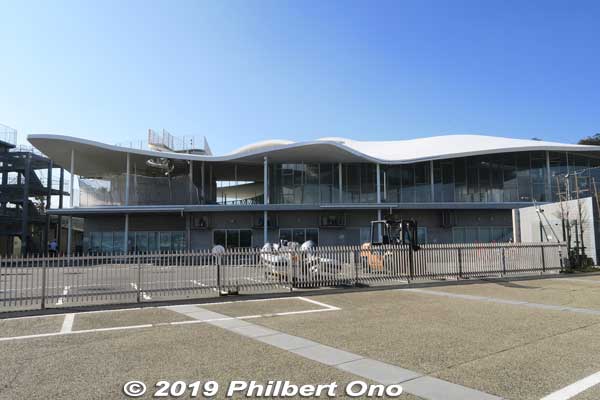
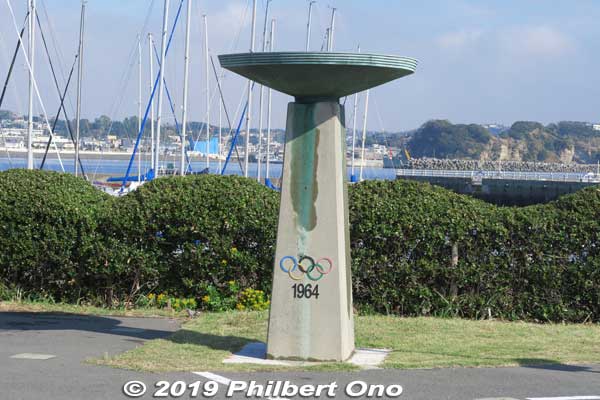
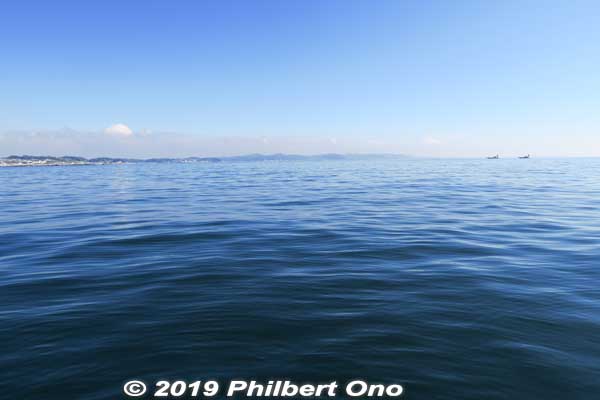
A: Enoshima island is connected to the mainland by a short bridge seen on the right of the island. Yacht Harbor is on the left of the island.
B: Boats to be cleared out of Enoshima Yacht Harbor for the Olympics.
C: Rest house.
D: Olympic flame cauldron on Enoshima used during the 1964 Tokyo Olympics. This is not the original location, but it’s quite near the original location in front of the Center Promenade in the yacht harbor. Notice the background bushes trimmed like waves.
E: Olympic sailing competition area (still unmarked).
(Special thanks to Fujisawa City Tourist Association‘s Inbound Promotion Dept. for the tour.)
FEBRUARY 2020
Ariake Arena (ARA)
February 2, 2020: A dedication ceremony is held for the new Ariake Arena in Koto Ward (有明アリーナ完成披露式典). Construction was completed in December 2019 as the venue for Olympic volleyball and wheelchair basketball. The ceremony is attended by Tokyo Governor Koike Yuriko, Yamashita Yasuhiro (Japanese Olympic Committee Chairman), Hashimoto Seiko (Minister for the Tokyo Olympic and Paralympic Games), and Suzuki Daichi (Japan Sports Agency Commissioner). The facility is permanent and one of the few venues expected to operate in the black after the Games.

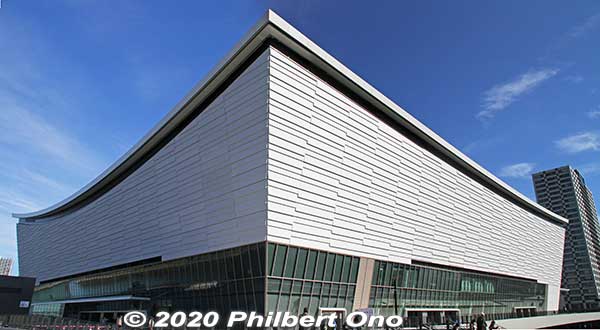
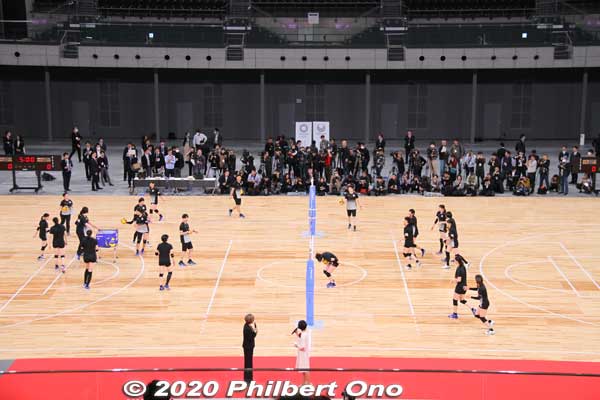
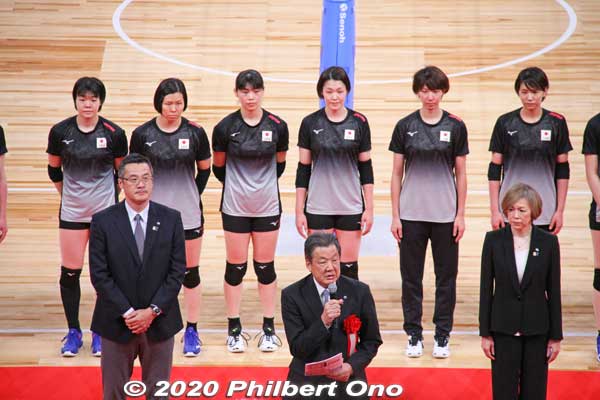
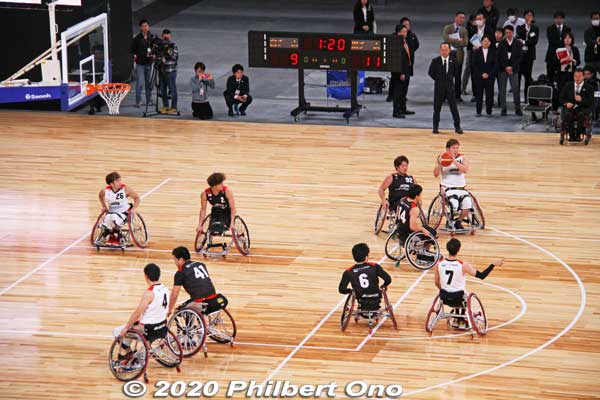
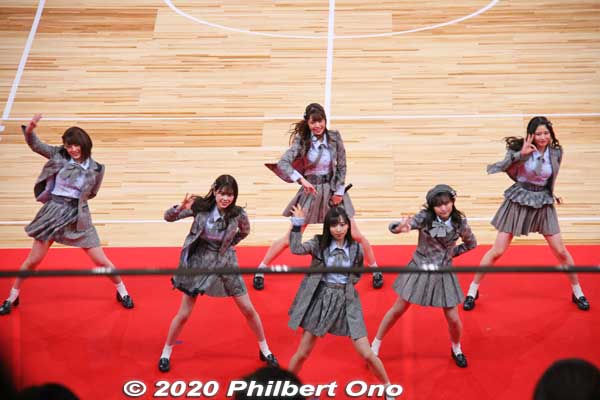
A: Completed in Dec. 2019, Ariake Arena is the Olympic volleyball and Paralympic wheelchair basketball venue.
B: During the dedication ceremony, Japan’s women’s volleyball team try the new court.
C: After their volleyball demo (only by the women’s team), a short speech. Men’s coach on the left and women’s coach on the right. In the middle is Shimaoka Kenji, Japan Volleyball Association Chairman and Olympic volleyball gold medalist at the 1972 Munich Olympics. The volleyball coach has to choose only 12 players for the Olympics. Such a hard decision. Star player Kurogo Ai is in the back.
D: Japan’s national wheelchair basketball team members play.
E: Some entertainment by AKB48 Team 8, a Japanese pop idol group.
More photos of Ariake Arena dedication ceremony here.
🔴 February 3, 2020: The Diamond Princess luxury cruise ship, with passengers and crew stricken with COVID-19, arrives Yokohama Port for a two-week quarantine. The number of infections on the ship increases daily as the Japanese government is seen as mishandling the incident. All 3,711 passengers and crew eventually disembark by March 1. As of May 1, 2020, 712 people from the ship are found to be infected and 13 died.
Early February 2020: More of the Japanese public begin to wear masks. Coronavirus becomes top news every day in Japan.
Tatsumi International Swimming Center (Diving pool)
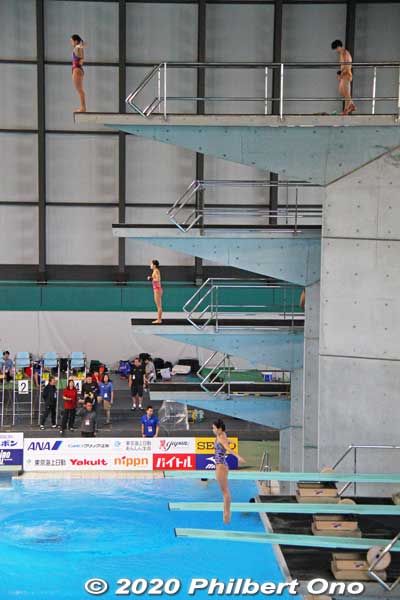

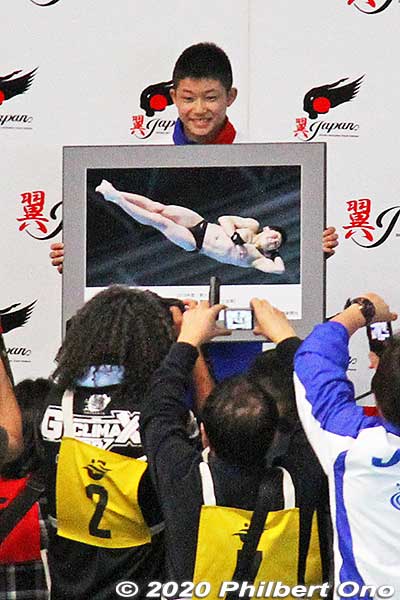
A: Platform diving practice by Japanese divers trying to qualify for the FINA Diving World Cup Olympic qualifier scheduled for April 2020 (later postponed to May 2021).
B: Itahashi Minami (板橋美波) dives from 10m platform. She eventually qualifies in 10m synchronized diving with Arai Matsuri to compete in the Diving World Cup and qualifies for Tokyo 2020 where she and Arai placed 6th.
C: Diving boy wonder Tamai Rikuto (age 13) qualified for the Diving World Cup and placed 7th in 10m men’s platform diving at Tokyo 2020.
Odaiba Marine Park and Aomi
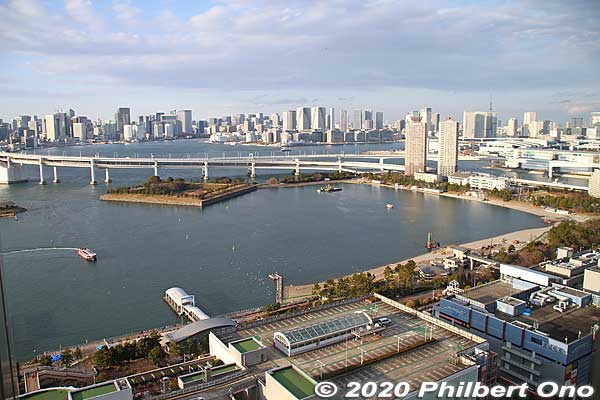
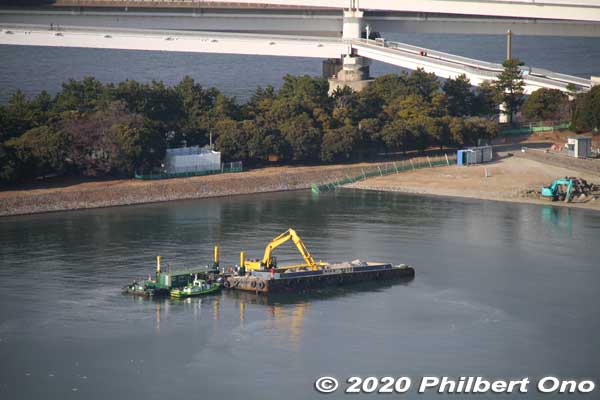
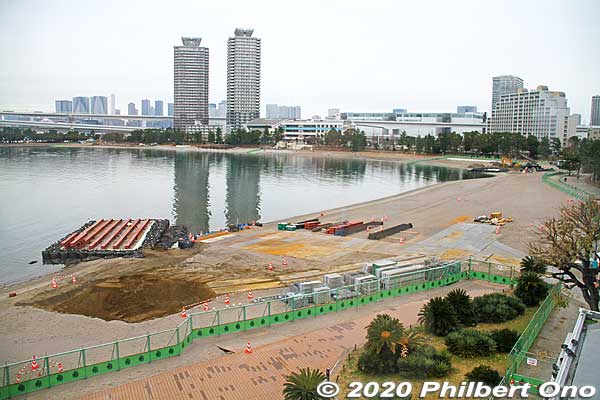
A: Sand from Kozushima island (south of Tokyo) is being dumped into Odaiba’s water to cover the ocean sludge and improve the water quality for triathlon/marathon swimming.
B: Odaiba beach is fenced off and under construction for triathlon swimming and marathon swimming.
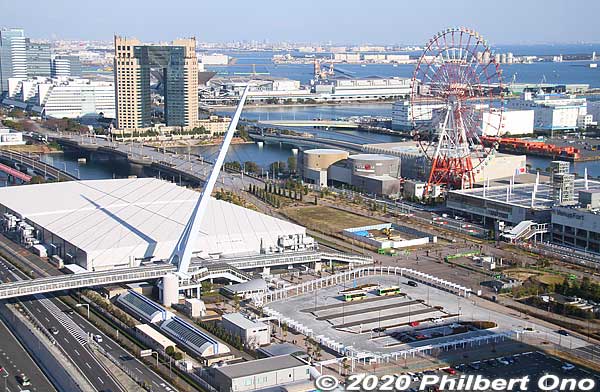
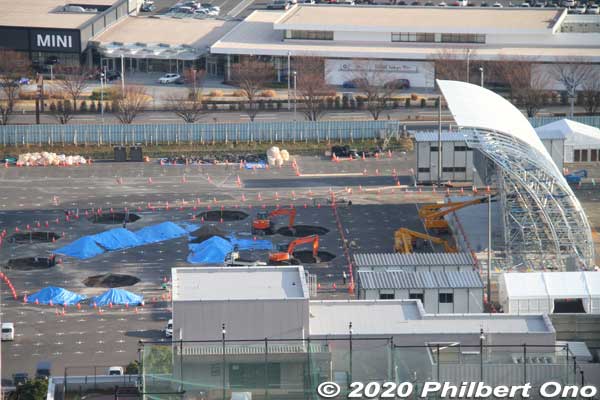
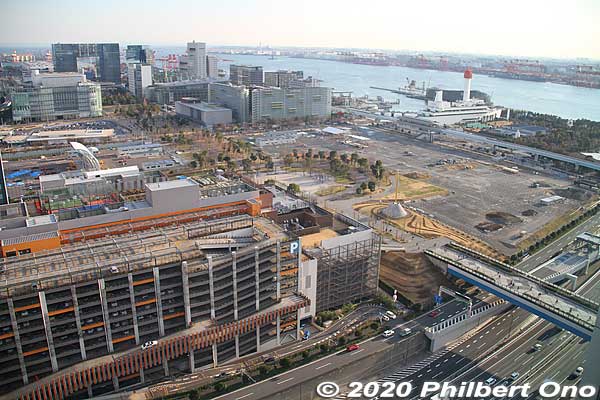
C: On the left is Yume-no-Ohashi Bridge where the Olympic/Paralympic flame cauldron would be placed. Forefront is Tokyo Teleport Station (Rinkai Line).
D: Aomi Urban Sports Park (AUP) under construction. Curved wall is for sport climbing.
E: On the right, the area to become 2020 Fan Park is still an empty lot.
🍀February 7–28, 2020: TOCOG recruits “Assistant Cast” (Ceremony Cast) volunteers for the Olympic and Paralympic Opening and Closing Ceremonies. Assistant Cast are to guide or assist the athletes during the ceremonies. (Not entertainers or perfomers.)
Only Japan residents are allowed to apply for the 1,000 Olympic Assistant Cast positions and 1,200 Paralympic Assistant Cast positions. They must be available to attend briefings and rehearsals in April, July, August, and September (Paralympics) 2020. Field Cast volunteers can also apply to be Assistant Cast members. (Due to the Games’ postponement and complete change in the Opening and Closing Ceremonies programs, Assistant Cast applicants end up never being selected.)
February 11, 2020: The disease caused by the novel coronavirus is named “COVID-19” by WHO.
February 13, 2020: A woman in her 80s in Kanagawa Prefecture becomes Japan’s first death caused by COVID-19. She had fallen ill on January 22, 2020 and was diagnosed with pneumonia on February 1.
February 15, 2020: The Olympic/Paralympic torch relay is rehearsed in three locations in Tokyo. The practice torch bearers (holding an unlit torch) are escorted by 30 security and sponsor vehicles.
The torch relay’s schedule and Google map route in each prefecture are also announced. The torch relay is not on a continuous route. They are separate torch relay segments usually along the main drag of the city to attract maximum crowds. https://olympics.com/en/olympic-games/tokyo-2020/torch-relay
Local municipalities also recruit torch relay volunteers to set up traffic cones, fences, watch/direct the spectators, etc.

February 17, 2020: Tokyo 2020’s official motto, “United by Emotion” is announced. People do not understand what it means. https://youtu.be/4t_7P9LShqU
February 18, 2020: The results of the second and final Paralympic ticket lottery held for Japan residents in January 2020 are announced. Tickets are readily won by many people.
🍀February 21, 2020: Field Cast general training sessions (in person) remaining this month in Tokyo are postponed to May or later. The general training sessions were supposed to end in late February 2020. Overseas volunteers and most other volunteers are not affected since they already attended the training session since October 2019. Attending only one general training session is required.
Late February 2020: Negative news headlines and hysteria on social media keep spreading. Tokyo is not on any lockdown. People are still free to go out.
Many events, concerts, and sporting events in Japan are being canceled or held without spectators. Pro baseball, soccer/football, rugby, and even sumo.
February 2020: Construction of the Tokyo Aquatics Centre (swimming, diving, artistic swimming) in Koto City/Ward is completed at a cost of ¥56.7 billion. Tokyo 2020’s last permanent venue to be completed. Dedication ceremony was scheduled for March 22, 2020, but it is postponed to Oct. 24, 2020 due to the pandemic. Construction time-lapse video (Exterior): https://youtu.be/8OGCrynb25I Interior: https://youtu.be/daTsSSAQnWs
February 28-March 1, 2020: The 2020 Japan Para Championships BOCCIA (天皇陛下御即位記念2020ジャパンパラボッチャ競技大会) to be held at Ariake Gymnastics Centre by the Japanese Para-Sports Association is canceled, becoming the first Tokyo 2020 test event to be affected by COVID-19.
The event is later downgraded to a boccia operational test event held on February 29–March 1, 2020 and closed to the public.
MARCH 2020
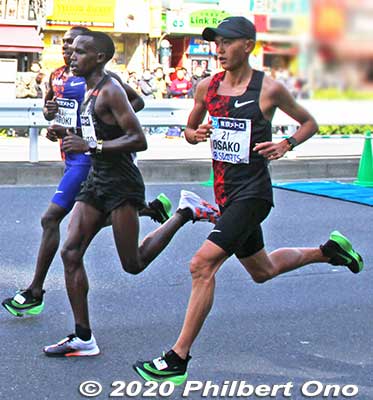
March 1, 2020: Tokyo Marathon 2020 is held only for elite runners (176 elite runners and 30 wheelchair marathoners). The remaining 37,500 runners selected by lottery from the public had to cancel their run. The marathon is also an Olympic qualifier for the third and final berth for Japan’s Olympic men’s marathon (claimed by Osako Suguru who placed 4th as the top Japanese runner, breaking the Japanese record and earning ¥100 million as a reward).
Out of 11,000 Tokyo Marathon volunteers, only 900 volunteer group leaders go on duty. The other 10,000 volunteers lose their roles and stayed home. The extra Tokyo Marathon volunteer uniforms are donated to healthcare workers. (Osako placed sixth in the Tokyo 2020 men’s marathon in Sapporo, then retired to devote himself to train young runners.)
March 2, 2020: Prime Minister Abe Shinzo orders Japanese public schools to close until the end of spring vacation in early April. School teachers and parents are caught off guard and struggle to cope, especially working parents with young kids at home all day. Hospitals soon have a shortage of staff who cannot come to work because they have to stay home to care for their young children.
🍀March 2 – mid-April 2020: The 80,000 Games volunteers (Field Cast) are thrilled to finally receive their volunteer roles via staggered email notifications. About 700 kinds of volunteer roles at over 100 locations (including training venues) are offered. By March 7, about 50 percent of role notifications are sent out. The initial deadline to accept or reject the role is March 11, 2020 at 5:00 pm Japan time.
Volunteers are told that if they reject their role, there is no guarantee that an alternate role would be offered. Almost all volunteers accept their roles and therefore officially become Games volunteers. An anxious wait for many, a joyous notification for most, and a slight disappointment for some.
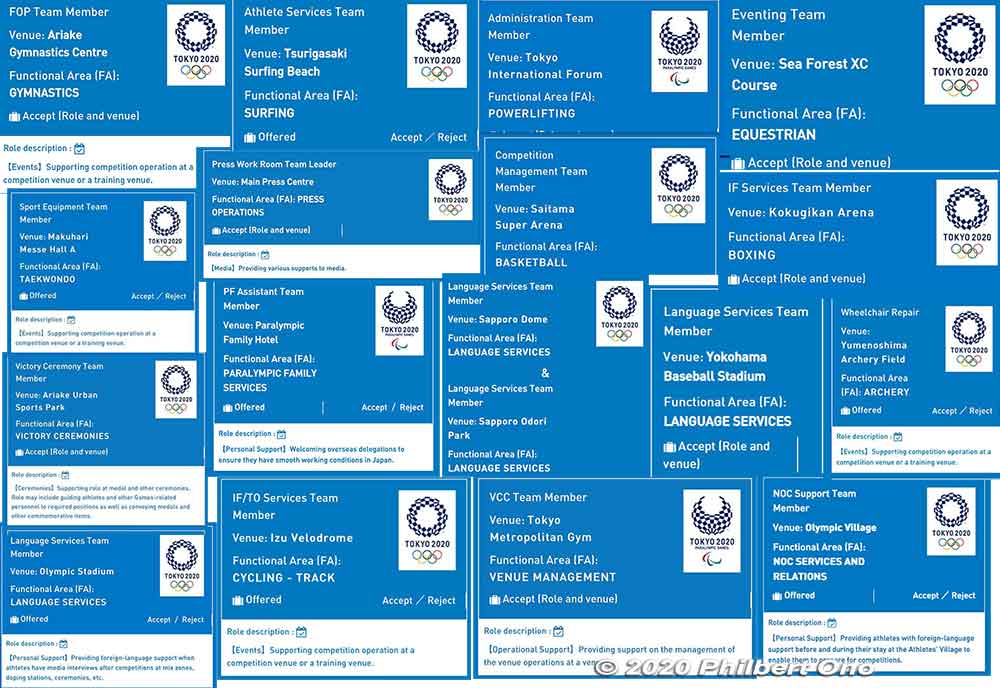
March 6–8, 2020: READY STEADY TOKYO sport climbing test event held at Aomi Urban Sports Park. Closed to the public.
🔴 All remaining Tokyo 2020 test events scheduled for 2020 are canceled or postponed, including the following which were to be open to the public:
[Canceled] 12-15 Mar. 2020: 2020 Japan Para Wheelchair Rugby Championships, Yoyogi National Stadium -Japanese Para-Sports Association, Free admission. 天皇陛下御即位記念2020ジャパンパラ車いすラグビー競技大会
[Canceled] 4-5 Apr. 2020: FIG 2020 Artistic Gymnastics All-Around World Cup Tokyo, Ariake Gymnastics Centre – Internationale de Gymnastique / JAPAN GYMNASTICS ASSOCIATION, Admission charged. 2020体操ワールドカップ東京大会
[Canceled] 11-12 Apr. 2020: Water Polo Challenge Match 2020, Tatsumi Water Polo Centre – Japan Swimming Federation, Admission charged. 水球チャレンジマッチ 2020 水球日本代表壮行試合
[Canceled] 2-3 May 2020: 2020 Japan Para Athletics Championships, Olympic Stadium – Japanese Para-Sports Association, Admission TBA. 2020ジャパンパラ陸上競技大会
[Canceled] 21-26 Apr. 2020: Volleyball Ariake Arena Test Matches 2020, Ariake Arena – Japan Volleyball Association, Admission charged. 2020バレーボール有明アリーナテストマッチ
[Canceled] 21-26 Apr. 2020: FINA Diving World Cup 2020, Tokyo Aquatics Centre – Fédération Internationale de Natation, Admission charged. FINA 飛込ワールドカップ2020 兼東京2020オリンピック最終選考会
[Canceled] 25-26 Apr. 2020: Asia Sevens Invitational 2020 (Rugby), AJINOMOTO STADIUM – Japan Rugby Football Union, Admission charged. アジアセブンズインビテーショナル2020
[Canceled] 30 Apr.-3 May 2020: FINA Artistic Swimming Olympic Games Qualification Tournament 2020, Tokyo Aquatics Centre – Fédération Internationale de Natation, Admission charged. FINA アーティスティックスイミング ワールドシリーズ 2020、東京2020 オリンピック最終選考会
[Canceled] 5-6 May 2020: Tokyo Challenge Track Meet 2020, Olympic Stadium – Japan Association of Athletics Federations, Admission TBA. (仮称)東京チャレンジ陸上2020
Many other events, concerts, and sporting events in Japan are also canceled or held without spectators. Pro baseball, soccer/football, rugby, and sumo.
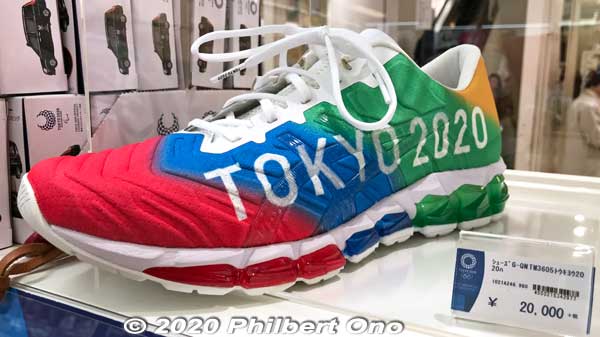
🔴 March 11, 2020: WHO declares COVID-19 as a “pandemic.” As of this date, Japan had 1,330 COVID-19 cases, 55 new cases, and 21 deaths.
March 2020: Athletes around the world have difficulty training due to closed facilities and lockdowns. Some Olympic athletes, sports federations, and NOCs complain to the IOC or threaten to pull out of the Games.
The narrative of making Tokyo 2020 a symbol of Japan’s recovery from the Tohoku Region’s 2011 earthquake, tsunami, and nuclear meltdown fades away in the COVID-19 crisis.
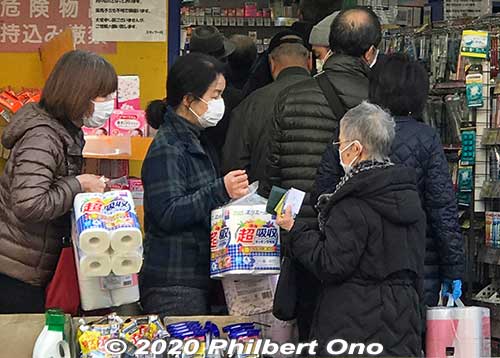
Japan never has any lockdowns, and people remain free to go out. There is some panic buying of toilet paper, alcoholic wipes, masks, hand sanitizers, and paper towels.
The tourist industry see a major loss of income.
March 12, 2020: At the White House, U.S. President Donald Trump says that the Games should maybe be postponed by one year rather than seeing it with no spectators.
March 12, 2020: Olympic flame-lighting ceremony is held in Greece without spectators. Japan’s first torch bearer/runner is Noguchi Mizuki, women’s marathon gold medalist at Athens 2004.
March 12, 2020: While Tokyo 2020 officials continue to reiterate that the Games will be held as scheduled, TOCOG executive board member Takahashi Haruyuki (高橋治之) states his personal opinion to the press that if Tokyo 2020 cannot be held in summer 2020, delaying the Games by one or two years is feasible and the decision must be made by May 2020. His statements further fuel speculation on the Games’ postponement or cancelation.
March 13, 2020: The Greek Olympic Committee cancels the remainder of the torch relay in Greece since it was attracting large crowds.
March 13, 2020: Apparently in response to President Trump’s remarks the day before, at a press conference, Japan’s Olympic Minister Hashimoto Seiko states: “The IOC and the organizing committee are not considering a cancellation or postponement — absolutely not at all.”
🍀On the Games volunteer online portal, a notice is posted for all Field Cast stating that the Games will still be held despite the WHO’s pandemic declaration.
Mid-March 2020: Top officials including Prime Minister Abe Shinzo and IOC President Thomas Bach insist that Tokyo 2020 will be held as planned.
🍀Meanwhile, Tokyo 2020 volunteers and staff are annoyed and demoralized by noisy naysayers and mass media and social media spreading negativity and useless “what if” scenarios.
🔴 March 20, 2020: Olympic flame arrives in Japan (Matsushima Air Base, Miyagi) from Greece in a special chartered plane operated by both JAL and ANA on a windy day. “Hope Lights Our Way” is the torch relay motto.
March 20–25, 2020: The Olympic flame is displayed to the public in Tohoku cities (Ishinomaki, Sendai, Iwate, and Fukushima). Huge crowds turn up to see the flame in a small cauldron, alarming officials concerned about social distancing. The flame is then kept hidden in multiple lanterns in top secret locations in Tokyo until September 1, 2020 when it is displayed in the Japan Olympic Museum.
🍀Torch relay volunteers receive notifications from their respective municipalities for torch relay volunteer duties. (Torch relay volunteers from out of town would later be rejected in favor of local resident volunteers only.)
March 20, 2020: USA Swimming CEO Tim Hinchey sends a letter to the U.S. Olympic & Paralympic Committee requesting the Tokyo Olympics to be postponed by a year. USOPC CEO Sarah Hirshland and USOPC chair Susanne Lyons reply to the letter, saying that they would follow the guidance of the IOC and IPC and that it is too soon to make a final decision on the Games.
March 22, 2020: The Canadian Olympic Committee announces its decision to not send Canadian teams to the Olympic and Paralympic Games in the summer of 2020. They urge the Games to be postponed by one year for the health and safety of their athletes and the world community.
March 22, 2020: IOC Executive Board holds a teleconference and decides to start talks with TOCOG regarding the Games, including the possibility of postponement. They are to make the final decision on the Games in about one month. https://olympics.com/ioc/news/health-and-safety-paramount-as-ioc-executive-board-agrees-to-continue-scenario-planning-for-the-olympic-games-tokyo-2020
March 23, 2020: Speculation and questions by Japanese news media on the consequences of a postponement of Tokyo 2020 (cancellation is not an option):
・Schedule-wise, a postponement to summer 2022 looks less busy than summer 2021. However, 2022 would be detrimental to athletes who have trained for 2020 or already qualified for Tokyo 2020.
🍀 ・Regarding the 110,000 Games and City volunteers, it is possible that TOCOG will do the recruiting process all over again. (Did not happen.) Volunteers who are college students scheduled to start new jobs next year will likely have to drop out.
・About 60 percent of the 43 venues are existing facilities and they are already booked from autumn 2020. Saitama Super Arena, Makuhari Messe, etc., might be difficult to reserve for any postponed dates. They might have to cancel events already booked to make room for the Olympics. There are also many training venues and many pre-game training camps (host towns) all over Japan. Can they still be used? One city spent US$1 million to import sand to build a practice court for a beach volleyball national team.
・The Olympic Village in Harumi is being rented by TOCOG from real estate companies for ¥4.2 billion per year. If the Games are postponed, TOCOG will have to keep paying the rent for a longer time, costing more money. The village has over 5,600 condo units and about 940 units have already been sold. A second block of units is scheduled to be sold from June 2020. After the Games, additional units will be built and existing units are to be renovated before owners move in from spring 2023. However, if the Games are postponed, their move-in date will be delayed.
・How to refund the 4.48 million tickets that have been sold?
・Olympic sponsors have a contract lasting until the end of 2020 to use the Olympic logo on their products. If the Games are postponed, will they have to pay more to extend the contract?
・Torch relay supposed to start this week, but it’s still in limbo. It’s proving to be very popular with large crowds coming to see the Olympic flame displayed in the Tohoku region even though the organizer told people to refrain from seeing the flame.
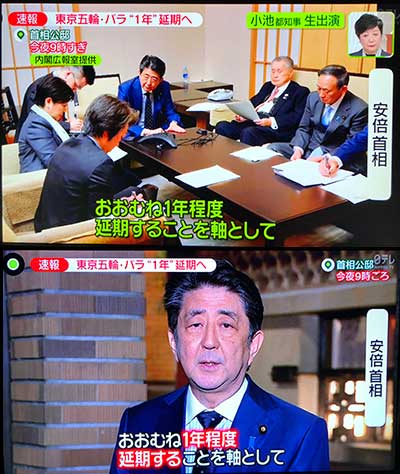
🔴 March 24, 2020: During a teleconference, Prime Minister Abe Shinzo, Tokyo Governor Koike Yuriko, TOCOG President Mori Yoshiro, and IOC President Thomas Bach agree to postpone the Tokyo 2020 Olympics and Paralympics to summer 2021 at the latest.
As announced to the world by Prime Minister Abe, Tokyo 2020 is not to be canceled, but only postponed by “about a year.” Exact dates still undecided, but the Games will not be held in 2020. The first time in history for an Olympics to be postponed.
Lots of media speculation follow over whether it would be better to hold the Games in spring 2020 (cooler than summer, but less preparation time) or autumn like in 1964 (cooler, but conflicts with other sporting events).
The “Tokyo 2020” designation is to be retained so all the medals, torches, logos, banners, “Look of the Games,” merchandise, etc., will still be usable.
Torch relay in 2020 is postponed to 2021. Most torch runners are to be retained for 2021. The Olympic flame will remain in the Tohoku region for now, maybe until next year.
The original Tokyo 2020 plan will be retained as much as possible, including keeping the marathon in Sapporo.
Tokyo 2020 ticket sales in Japan are suspended (and never resumed).
Further construction of temporary facilities at venues (such as Tsurigasaki Beach and Aomi Urban Sports Park) are suspended.
🍀Venue-specific training for Games volunteers is postponed to 2021.
March 26, 2020: TOCOG forms a new committee named “Tokyo 2020 New Launch Task Force” to steer the planning of the postponed Games. Their top priority now is to set the new dates and reserve the necessary venues.
Tokyo Big Sight and Makuhari Messe might be the most troublesome since they are already booked by other events. Tokyo Big Sight (press and broadcast centers) already had reservations for trade shows from December 2020 to 2021. Those trade shows are major business opportunities for many thousands of companies. Canceling the trade shows might mean giving compensation to all those affected companies.
🍀Volunteers, accommodations, security, and ticketing also to be addressed.

🍀Official notice on the volunteers’ online portal informs Tokyo 2020 volunteers that they will be retained for 2021 unless they withdraw on their own. Similar notice also received by temporary paid staff.
“If you would like to continue your journey as a Field Cast, you are not required to go through any procedures, on the other hand, we would like to kindly request you to withdraw your application if you cannot participate at the games time. Details will be announced as soon as it is decided.”
March 27, 2020: World Athletics President Sebastian Coe states that all 6,200 athletes qualified so far for Tokyo 2020 will keep their slots even for the postponed Games.
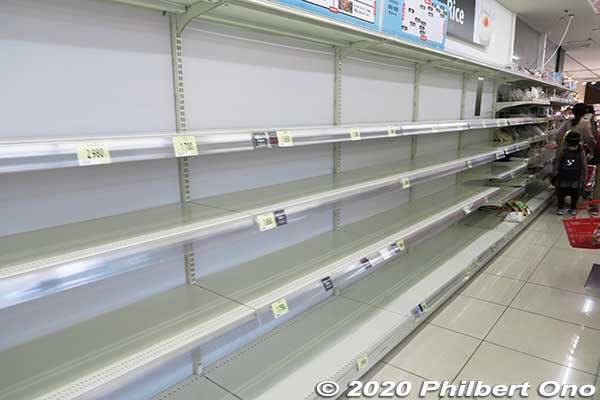
March 28, 2020: Tokyo Governor Koike issues a stay-home request for the first time starting this weekend. Governor Koike urges residents to try and work from home from next week. Chiba, Kanagawa, and Saitama Prefectures also coordinate with her and urge their residents to avoid traveling to Tokyo.
Unfortunately, she neglects to mention that the stay-home order would still allow people to go grocery shopping. Panic buying ensues in Tokyo before the weekend. Besides toilet paper and sanitary goods selling out, supermarkets run out of rice, bread, meat, instant noodles, bananas, and fresh vegetables. Toilet paper shortage continues for some time.
The number of infections in Tokyo increases by 41 and 47 this past two days, the largest increase ever.
🔴 March 30, 2020: New dates for Tokyo 2020 are announced. The Olympics are to be held on July 23–August 8, 2021 and Paralympics on August 24–September 5, 2021. Marathon and race walk to remain in Sapporo. The “Tokyo 2020″ name to be retained in 2021.
For Japan residents, most tickets already purchased are to be honored, but refunds will be made for tickets that cannot be honored due to changes in scheduling or the venue. Ticket holders can also opt to receive refunds.
Ticket sales scheduled from April 2020 are postponed (eventually canceled). Shipment of tickets scheduled from June 2020 is also postponed (eventually canceled). Postcard lottery for the Paralympic tickets to be conducted as originally scheduled until April 5 (eventually canceled).

Major international sporting events scheduled for 2021 are also later rescheduled to make room for Tokyo 2020.
March 30, 2020: Tokyo Governor Koike holds another press conference and urges people to avoid patronizing bars, nightclubs, and izakaya where people talk and drink in cramped spaces.
As a backup COVID facility, Tokyo Governor Koike proposes using the Olympic Village to care for coronavirus patients with mild symptoms. Condo owners are not too happy about this. (Her proposal is never implemented.)
🍀Late March 2020: City Cast volunteers start receiving notifications for their role assignments.
March 2020: The Games’ one-year postponement affects venues in various ways:
Surfing venue Tsurigasaki Surfing Beach (TSB) in Ichinomiya, Chiba already had 70 percent of Olympics-related construction completed. They included prefab buildings for surfers, staff, and the press. Further construction is suspended. Local officials say it will take three months to finish the construction, so they will restart in 2021. Since prefab structures might not endure the 2020 typhoon season, a few are boarded up.
Aomi Urban Sports Park (AUP), a temporary venue in Odaiba, already had the sports climbing wall built and tested in March 2020. However, the wall is to be partially dismantled for safety reasons. Only the wall’s support structure still stands. The spectator seating also had to be removed since it is not durable outdoors for a year.
Being outdoors, Ariake Urban Sports Park (ASP) (Skateboarding and BMX) will likely have to be resurfaced since the concrete may deteriorate during the year.
Shiokaze Park (SHP) (beach volleyball) has sand imported from Vietnam. The sand will have to be cleaned regularly and raked to prevent fungus.
March 31, 2020: Reuters reports that TOCOG executive board member Takahashi Haruyuki lobbied and secured the support of IOC members such as Lamine Diack for Tokyo’s successful bid for the 2020 Summer Games. Takahashi gave Diack gifts such as digital cameras and a Seiko watch. He denies any wrongdoing in giving the gifts, saying it was normal.
For his lobbying efforts, Takahashi was paid US$8.2 million by the Tokyo 2020 bid committee, becoming the largest single recipient of money from the bid committee mostly funded by Japanese companies. He declined to say how he used the money he received.
APRIL 2020

Spring 2020: TOCOG’s original plan was to sell 9 million tickets. (London had 8.5M, and Rio 6.8M.) So far, 4.48 million Olympic tickets and 970,000 Paralympic tickets have been sold to Japan residents through the two ticket lotteries, etc., and 2 million Olympic tickets alloted to overseas customers.
The original plan was to have 7.8 million Olympic spectators and 2.3 million Paralympic spectators.
However, plans for additional tickets sales in Japan (Spring Sales Schedule in the above graphic) after the postponement are eventually canceled. ATRs overseas like CoSport continue to sell tickets until March 2021.
April 3, 2020: Japan starts to implement a two-week quarantine at home or in a hotel for everyone entering Japan from overseas. People from the US, most of Europe, Indonesia, Thailand, China, and Korea are also banned from entering Japan.
April 3–4, 2021: Wheelchair rugby operational test event held at Yoyogi National Stadium. Closed to the public (no spectators).
🔴 April 7, 2020: Due to increasing COVID-19 cases, Prime Minister Abe Shinzo finally declares Tokyo’s first “State of Emergency” until May 6 for seven prefectures: Tokyo, Saitama, Chiba, Kanagawa, Osaka, Hyogo, and Fukuoka. (Later expanded nationwide on April 16.) Ends on May 25, 2020.
“State of Emergency” is mainly a legal term to allow local governments to shutdown businesses who do not voluntarily comply. Not as strict as overseas, no lockdowns (illegal according to Japanese law), and no fines. Public transportation still runs, but non-essential travel is discouraged.
Evening establishments such as bars, karaoke, and izakaya are to close. Department stores and shopping malls are also to close, but essential businesses such as supermarkets, convenience stores, drugstores, restaurants, public baths, and even barbershops can remain open.

April 8, 2020: The number of COVID-19 deaths in Japan exceeds 100. (Excluding those on the Diamond Princess.) The daily number of cases also hits a record 500 on this day. Ten days later, the total number of COVID-19 cases in Japan exceeds 10,000.
April 8, 2020: In Tokyo, the National Training Center where Olympic athletes train is closed. (Reopens in May 2020.)
April 16, 2020: Prime Minister Abe Shinzo expands the “State of Emergency” nationwide until May 6. (Later extended to May 31, but ends earlier on May 25.)
April 17, 2020: Japanese government starts the distribution of two free washable gauze masks to each household in Japan starting with Tokyo. Dubbed “Abenomasks,” the controversial free masks are ridiculed for their small size, wasteful expense, and occasional defects. Some 83 million of the 280 million procured masks are never distributed and kept in storage as of Oct. 2021.
April 2020: Japanese doctors say that holding the Games would be difficult without a vaccine. Negative, sensational, exaggerated, and misleading news headlines spread doom and gloom among the public.
April 20, 2020: TOCOG forces the IOC to delete a statement from the IOC website saying “Japanese Prime Minister Abe Shinzo agreed that Japan will continue to cover the costs…” with regard to the postponement costs. TOCOG claimed that no agreement had been reached as to who would cover the cost.
April 22, 2020: TOCOG reports its first case of an employee infected with COVID-19. Male employee in his 30s. The floor where he worked at the TOCOG office in Harumi Triton Square is evacuated for disinfection. Two more get infected in August, and a fourth employee (male) gets infected in early September 2020.
April 29, 2020: John Coates, the head of the Tokyo 2020 Coordination Commission, states that holding the Games will not hinge on whether or not there is a vaccine.
MAY 2020
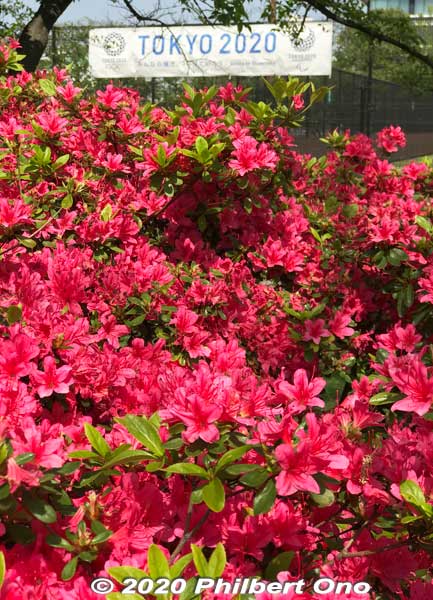
May 7, 2020: Prime Minister Abe extends the nationwide “State of Emergency” to May 31. (Lifted early on May 25.)
May 12, 2020: Due to low demand, five Tokyo 2020 Official Shops in Tokyo and Osaka are closed. (Online shop and other shops still operate.) More official stores close by August 2020.
May 14, 2020: IOC announces that it will provide US$800 million to help cover the operating expenses of the Tokyo 2020 postponement. It includes $150 million for international sport federations (IFs) and national organizing committees (NOCs).
🔴 May 20, 2020: In an interview with the BBC in the UK, Thomas Bach admits that if the Games cannot be held in 2021, it would have to be cancelled and not postponed again. (As earlier stated by Prime Minister Abe Shinzo.) This acknowledged possibility of cancellation cast a dark cloud of uncertainty over Tokyo 2020 for at least a year.
May 20, 2020: Japan National Tourism Organization (JNTO) announces that the number of inbound tourists in Japan was down by 99.9 percent in April 2020 (only 2,900 overseas visitors), compared to the same month in 2019. In March 2020, it was 93 percent less. Huge blow to the tourism industry.
May 21, 2020: Tokyo-based Foreign Correspondents’ Club of Japan (FCCJ) President Khaldon Azhari issues an apology to TOCOG for the club magazine’s April 2020 issue with the cover showing the Tokyo 2020 Olympic emblem depicted as coronavirus. TOCOG had lodged a complaint claiming copyright infringement for the offensive and insensitive image. Although FCCJ says it is a parody, FCCJ President Azhari promises to remove the cover image from its website. A group of Tokyo journalists and press photographers criticizing or making fun of Earth’s biggest event employing many thousands of their own kind (journalists and press photographers) in their own city.
May 22, 2020: At a News Corp media round table with Australian sports executives, John Coates, the head of the Tokyo 2020 Coordination Commission, says that October will be a critical time when they assess the viability of the Games, whether it can be held or not.
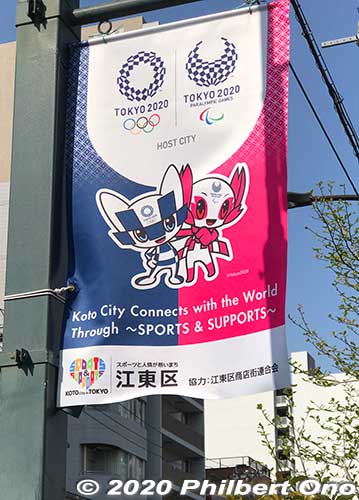
May 25, 2020: With decreasing Covid cases, the first State of Emergency is lifted for all prefectures, before the scheduled May 31 date.
May 27, 2020: In Tokyo, the National Training Center, closed since April 8, 2020, reopens to allow Olympic athletes to train again. However, due to social distancing, fewer athletes are allowed in the facility at one time, and they cannot train as much as before.
May 29, 2020: The Japanese Cabinet sets July 22, 2021 (Thursday), the day before the Olympic Opening Ceremony (whose day is already set as a national holiday called Sports Day usually in October), as a national holiday called Ocean Day.
August 8 (Sunday), the day of the Olympic Closing Ceremony, is set as a national holiday called Mountain Day observed on August 9 (Monday). This makes the Opening Ceremony fall on a four-day holiday weekend and the Closing Ceremony on a three-day weekend. (No extra national holidays for the Paralympics.)
JUNE 2020
🔴 June 5, 2020: TOCOG Vice President Endo Toshiaki states that the decision to hold or cancel the Games can wait until spring 2021 when Olympic qualifiers are held. Critics say that any decision to cancel the Games should be made by the end of the year to save costs.
June 10, 2020: IOC and TOCOG hold their joint and separate executive meetings. TOCOG announces the Roadmap to Summer 2021. TOCOG Chairman Mori Yoshiro reiterates, “Cancellation is not even up for discussion.“
June 12, 2020: Tashima Kohzo, the head of the Japan Football (Soccer) Association (who had gotten infected and recovered from COVID-19), stated that the Tokyo 2020 schedule for men’s and women’s soccer/football matches would remain the same. All the football venues were apparently secured for 2021. This was the first sign that progress was being made for getting the venues and setting the competition schedule.
June 16, 2020: Prominent TOCOG executive Takahashi Haruyuki states that postponing the Games again to 2022 should also be an option. This statement is soon dismissed by TOCOG CEO Muto Toshiro as being only a personal opinion and not from TOCOG.
June 16, 2020: IOC announces the results of a survey conducted in May 2020 on athletes in 135 countries and regions. Of the 4,089 athletes who replied, half said that maintaining their motivation was the biggest problem for them.
June 2020: NHK reports that 65 percent of domestic Olympic sponsors are still undecided on whether to continue being a sponsor for another year. This survey is actually unfair because it was conducted before TOCOG started negotiations with sponsors to extend the sponsorship. The sponsors still did not know how much it would cost to extend the sponsorship. So naturally most of them could not make any decision yet.
June 2020: The 940 owners of Olympic Village condominiums (named “Harumi Flag”) finally receive a letter saying that they could either wait another year to move in or cancel their purchase and get back their deposit without any cancellation fee. They must make their decision by the end of 2020. As of June 2020, they do not receive any word about receiving compensation for the delay. The original move-in period was to be March 2023 to Sept. 2024, but owners now have to wait at least another year.
June 19, 2020: Pro sports in Japan are allowed again, but without spectators. Pro baseball restarts with no spectators, then later with a limit of 5,000 spectators (at least until late September 2020) in stadiums.
Non-sporting events allow a maximum of 1,000 people in the audience or no more than half capacity of the indoor venue. Close-contact businesses (karaoke, etc.) are allowed to reopen. People are allowed to travel between prefectures.

June 23, 2020: Japan Olympic Museum near the Olympic Stadium reopens after being closed since February 27. Online reservations (max. 5 people per reservation) are now required and the number of visitors are limited to 60 people per 30 min.
June 27, 2020: J.League pro soccer games restart in Japan (J1 league on July 4) without spectators.
COVID-19 safety protocols require players and staff to be tested, wear masks whenever possible, not share any water bottles, and avoid meeting people.
With lower income due to lower attendance, many soccer teams struggle financially and seek new revenue streams.
June 29, 2020: John Hopkins University announces that the world has exceeded 10 million COVID-19 cases and 500,000 COVID-19 deaths. Includes 125,714 deaths in the US, 57,070 in Brazil, 43,634 in the UK, 34,738 in Italy, 29,781 in France, and 974 in Japan.
June 30, 2020: For the first time in Japan, clinical trials of a COVID-19 vaccine starts with healthcare workers in Osaka. They hope the vaccine will become available between spring and autumn 2021. (A Japanese vaccine is never released to the public in 2021.)
JULY 2020
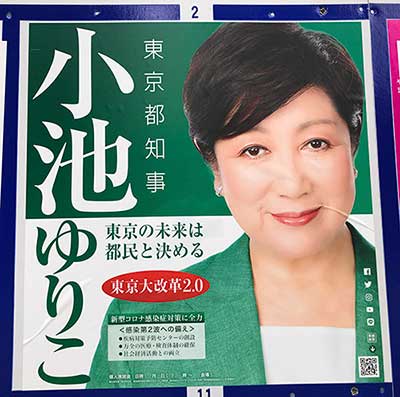
July 1, 2020: Tokyo Disneyland and Tokyo DisneySea reopen after being closed since February 29.
🔴 July 5, 2020: The Tokyo gubernatorial election is held with pro-Olympics Tokyo Governor Koike Yuriko re-elected in a landslide for another four years, crushing her 21 opponents favoring a cancelation or another postponement of Tokyo 2020. Winning 3,661,371 votes or 59.7 percent of the total vote, she receives many more votes than all the other 21 candidates combined.
Her massive victory means that most Tokyo residents want the Olympics to happen. Another strong and sure sign of widespread public support of the Games despite the pandemic.
Her closest rival, lawyer Utsunomiya Kenji opposing the Olympics wins only 13.76 percent of the vote or 844,151 votes in his third unsuccessful run for Tokyo Governor. Utsunomiya would later start an online petition in May 2021 to cancel Tokyo 2020.
🍀Early July 2020: An optional questionnaire sent to Games volunteers asked, “Do you have any worries or anxieties about being Field Cast?” As of July 10, 13,000 volunteers (out of 80,000) responded to the questionnaire saying that they were mainly concerned about how safe it would be against COVID-19.
🔴 July 8, 2020: Based on a news leak from unofficial sources, NHK reports a stunning news flash that TOCOG managed to secure all venues for 2021.
July 10, 2020: Spectators are allowed into pro sports venues in Japan, but no more than 5,000 or half the stadium capacity, whichever is less. (In effect at least until late September 2020.)
For fans entering the stadium, masks, temperature check, and hand sanitizer are required. Fans are to sit with several empty seats in-between. They are discouraged from loud cheering, singing (the team song), whistling, making noise (drums, etc.), high fiving, standing up, linking up arm-in-arm, and releasing balloons. They are only allowed to cheer in a normal voice, clap, and wave. No alcohol served in stadiums.
Sports volunteers for Japanese pro soccer teams start working again at games, but fewer than usual. In the case of Kawasaki Frontale, only one-third the normal number of volunteers work per game. They mainly check tickets, pass out programs to spectators, give directions to fans, work at the information desks, assist wheelchair spectators, and clean up the spectator stands after the game.
🔴 July 17, 2020: In a major announcement, TOCOG states that all venues have been reserved for 2021 including the Olympic Village and Tokyo Big Sight. And that the Olympics competition schedule has also been set for 2021. The new competition schedule is almost the same as the original one except for some events having a slight change in the start/end times to make operations and transportation easier. TOCOG has not yet actually signed any formal contract with any venue to use the venue in 2021. They are still negotiating compensation amounts, especially for the Olympic Village, Tokyo Big Sight, and Makuhari Messe.
The men’s and women’s marathons and race walks are to remain in Sapporo. The victory bouquet ceremony for these events are to be held in Sapporo, but for the first time in Olympic history, the medal ceremonies are to be held during the Closing Ceremony in the Olympic Stadium in Tokyo.
July 20, 2020: As of July 20, 2020, out of 166 vaccine candidates in the world, at least 24 of them are undergoing clinical trials. Three (one each in the UK, US, and China) are in Phase III clinical trials. (According to WHO.)
July 22, 2020: Tokyo Skytree (Tobu Tower Skytree Co., Ltd.) becomes a new Olympic Official Supporter.
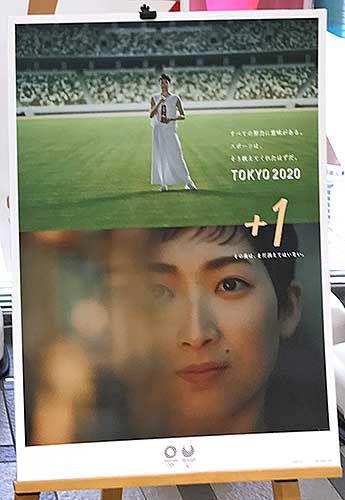
🔴 July 23, 2020: To mark the Olympics “1 Year to Go,” a short livestream media event (non-public) is held in the Olympic Stadium with swimmer Ikee Rikako giving a short, encouraging speech mixed with a short video.
Ariake Arena, Tokyo Aquatics Centre, Tokyo Stadium, Tokyo Metropolitan Gymnasium, Tokyo Metropolitan Government Building, and Tokyo Skytree are also lit up in the five Olympic colors from 8:00 pm.
Also, over 100 locations in Japan launch fireworks for a few minutes to mark this day. To avoid gathering crowds, they do not announce where the fireworks will be. In Tokyo, the fireworks are launched in the western suburb of Akishima.
At this point with regard to Tokyo 2020, the Japanese media always say, “Mountain of problems and things to do.” (問題山積み). The burning question on everyone’s mind is, “Can the Games still be held?” The short answer is, nobody knows for sure yet.
The IOC, IPC, TOCOG, TMG, and Japanese government all remain very determined to hold the Games. They will do anything to avoid cancellation.
There are reasons to remain optimistic. Pro sports have restarted in Japan while limiting the number of spectators and implementing safety protocols. Thomas Bach has stated that empty stadiums are not desirable, but that reducing the number of fans in stadiums is one scenario being considered.
July 24 – August 9, 2020: Original dates of Tokyo 2020 Summer Olympics.
July 27, 2020: Kasai Canoe Slalom Center (KSC) reopens to allow athletes to train until December 28, 2020. Due to non-use, the partially filled Canoe Slalom Center saw green algae in the water during spring 2020. But it was cleaned up before it reopened.
July 28, 2020: The number of COVID-19 deaths in Japan exceeds 1,000. (Excluding those on the Diamond Princess.)
July 2020: TOCOG starts negotiating with domestic Tokyo 2020 sponsors to extend their sponsorship (expiring on December 31, 2020) for another year.
Late July 2020: Nippon Budokan (NBK) (judo and karate) completes major renovations for earthquake resistance and the installation of LED lighting, more wheelchair seating, and wheelchair accessible toilets.
🍀July 30, 2020: TOCOG sends Games volunteers a mandatory email survey to confirm whether they still plan to be a volunteer for the Olympics in 2021. Similar survey also sent to Paralympic volunteers in August.
🍀The survey results in September showed almost 90 percent of the 80,000 Games volunteers responded.
For the question, “Will you participate as a Field Cast?“, over 80 percent said “yes,” almost 20 percent were undecided, and only 1 percent would withdraw. Another solid indication of strong support for the Games.
🍀 The email includes a revised schedule for volunteers. One major change is that the General Training would be conducted online in autumn (October–December 2020) for those who still have not taken it and for overseas volunteers. Most of volunteers in Japan already attended the in-person General Training in autumn 2019.
By taking the General Training online in autumn, overseas volunteers need not take it in person after arriving in Tokyo.
AUGUST 2020
🔴 August 3, 2020: In another major step forward, Paralympic venues are all reserved and the competition schedule for 2021 is announced. Almost the same as the original schedule in 2020.
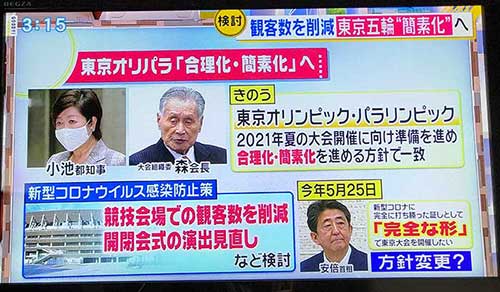
🔴 August 2020: TOCOG and IOC discuss ways to cut Games costs.
Out of 250 cost-cutting proposals, around 60 are high-priority which TOCOG is proposing to the IOC. IOC is not agreeing to all the proposals. TOCOG is to announce in late September the cost-cutting measures that they both agreed to. High-priority proposals include the following:
・Reduce the number of spectators allowed in venues.
・Reduce the number of IOC, NOC, and international sports federation (IF) members invited to the Games and reduce the perks given to them. They normally stay at first-class hotels and have luxury lounges at venues. Fewer VIPs means less expenses for transportation, lodging, meals, etc.
・Shorten the torch relay. However, this idea is later shelved.
・Shorten the Opening and Closing Ceremonies. Despite an earlier rejection by the IOC due to TV broadcast contracts, TOCOG is still insisting to scale back the ceremonies because it would symbolize the “simplification” of the Games. One early proposal was to combine the Opening and Closing Ceremonies for both the Olympics and Paralympics. This idea was soon shelved. Mori Yoshiro says that the program for the Opening and Closing Ceremonies is now back on the drawing board (or a blank sheet of paper “hakushi” 白紙, as they say in Japanese).
・Scale back Olympic ceremonies and festivals and other non-sporting events and frills. Olympic Village welcome ceremonies for each country’s athletes might be eliminated.
・Scale back host town programs for athlete training camps.
・From the athlete villages, allow the athletes to only go to their competition venue and back to create a travel bubble for them.
・In the athlete villages, allow fewer athletes to room together and scale back services.
Tokyo Governor Koike says that she wants to “simplify” the Games, but avoid making the Games dull as a result. She wants to retain the fun factor.
August 2020: Since April 3, 2020, almost 100,000 foreigners are stranded overseas after taking an overseas trip and not being allowed to re-enter Japan even though they are Japan residents. Only Japanese nationals have been able to return.
Meanwhile, foreigners in Japan are forced to cancel any overseas trips because of the possibility of not being allowed to re-enter Japan. Only Japanese nationals can travel overseas and return freely. Western countries have been criticizing this policy and Japan has stated that it’s working to allow the re-entry of foreign residents into Japan.
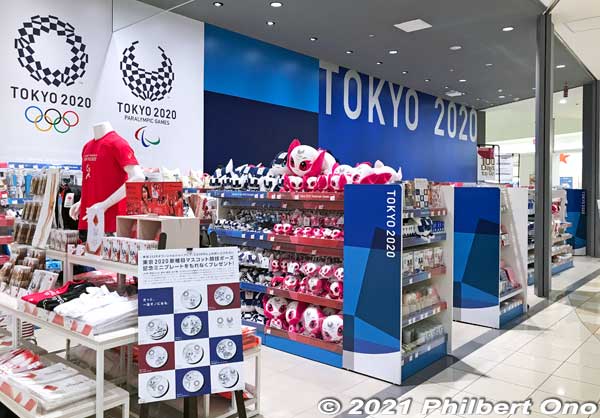
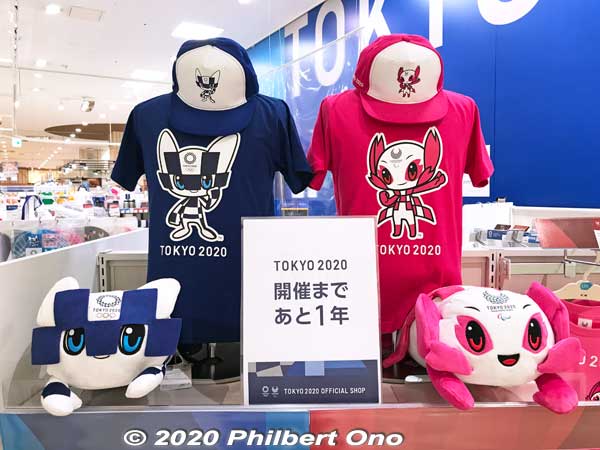

August 2020: Due to the muted Olympics mood and low demand for non-essential goods during the pandemic, sales of official Tokyo 2020 merchandise drop dramatically. Six Tokyo 2020 official shops (Ginza, Shinjuku East, Ueno, Shibuya, Yokohama East, and Shinsaibashi Shops) already closed. Seventeen smaller stores close in August. Official stores at Narita and Haneda Airports also close temporarily. The remaining 63 shops all over Japan remain open along with the online shop. As of late June 2020, there are about 6,360 officially licensed Tokyo 2020 products.
Summer 2020 onward: In news articles about Tokyo 2020 and Covid-19, editorial photos often show clichéd images of the Olympic rings or Tokyo 2020 logo with passersby wearing a mask.

Early August 2020: Japanese government announces that it signed vaccine supply agreements with Pfizer (USA) and AstraZeneca (UK) in case either develops an effective vaccine.
August 6, 2020: The giant Olympic rings on a barge decorating Odaiba is hauled away by boat to Yokohama for maintenance and protection from the typhoon season. They return on December 1, 2020.
🔴 August 19, 2020: The torch relay schedule is reported to remain the same (121 days) and not shortened due to opposition by local municipalities.
August 21, 2020: Tokyo Tatsumi International Swimming Center (Tatsumi Water Polo Centre, TWC) reopens for use by sports federations and Olympic athletes.
August 22, 2020: Sea Forest Waterway (SFW, rowing and canoe sprint) and Oi Hockey Stadium (OHS, field hockey) reopen.
August 23, 2020: Japan’s top track stars compete for the first time in the new Olympic Stadium (OLS) for the Seiko Golden Grand Prix 2020 Tokyo. Kiryu Yoshihide wins the 100-meter sprint in 10.14 sec. narrowly beating Aska Cambridge.
August 24, 2020: No official event/celebration to mark “1 Year to Go” for the Paralympics. Only a flurry of Japanese news saying so, interviews with Paralympic athletes, and Tokyo Skytree lit up in Paralympic colors.
Like other countries, Japan still has a long way to go to select their Paralympic athletes. Only goalball and taekwondo have finished selecting their Paralympians. Other Para-sports have selected only some or no athletes so far. Para-equestrian, football, wheelchair basketball, and wheelchair rugby in Japan still have not selected their Paralympians nor scheduled any qualifiers yet. They are still trying to decide how to do it safely.
August 25– September 9, 2020: Original dates of Tokyo 2020 Paralympics.
August 28, 2020: Prime Minister Abe Shinzo (Tokyo 2020 Supreme Advisor/Chairperson) announces his resignation as prime minister due to health reasons. His Chief Cabinet Secretary Suga Yoshihide emerges in early September as the frontrunner to succeed him.
SEPTEMBER 2020
September 1 to November 1, 2020: The Olympic flame is displayed in a small lantern at the Japan Olympic Museum in Tokyo. Advance reservations online required to visit the museum. Maximum 60 visitors are allowed per 30 min. Visitors have only 1 hour to tour the museum.
September 1, 2020: Yumenoshima Park Archery Field (YAF) reopens. Ariake Arena (ARA) also reopens this month.
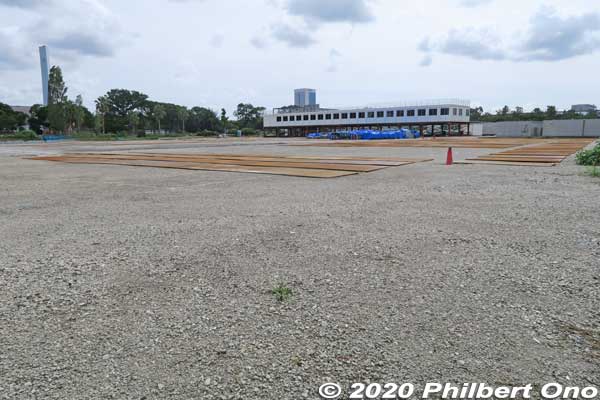
Final Field’s South Stand being built starting with the structure for Olympic Family and Sport (SPT) office in the distance. This part of Yumenoshima Park had an oval running track.

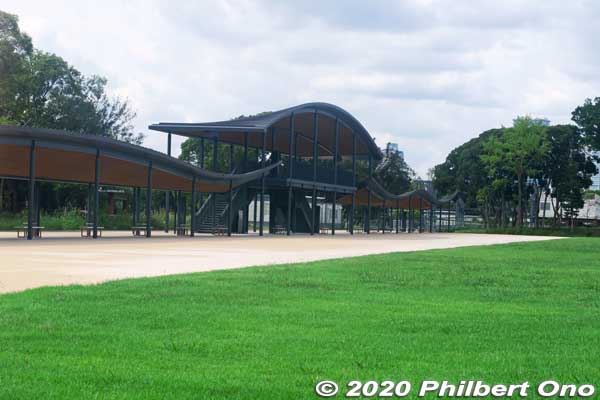
A: Final Field’s archery target area under construction. Final Field to be a temporary venue.
B: Ranking Field (permanent venue) already completed in Feb. 2019.
🔴 September 4, 2020: The Coronavirus Countermeasures Committee (新型コロナウイルス感染症対策調整会議) start a series of seven meetings in the following months to discuss and decide Covid safety measures for Tokyo 2020. Representatives of Japanese government ministries, TMG, TOCOG, etc., proceed to make decisions on how to allow overseas visitors entry to Japan, Covid testing, medical operations, and venue operations.
The committee is headed by Deputy Chief Cabinet Secretary Sugita Kazuhiro. Coronavirus safety measures to maximize safety and ease anxiety are to be announced by the end of 2020. One major proposal is to allow Olympic and Paralympic athletes entry to Japan without requiring a two-week quarantine period in Japan.
🔴 September 7, 2020: Tokyo 2020 Coordination Commission Chair John Coates tells Agence France-Presse in an interview that the Olympics will be held in 2021 with or without the coronavirus. Apparently, Tokyo 2020 is already past the point of no return.
September 13, 2020: TOCOG President Mori Yoshiro suffers a fall at home and fractures his breastbone. A sling is put on his left arm.
September 14, 2020: A Liberal Democratic Party (LDP) presidential election is held to elect Suga Yoshihide to become Japan’s next prime minister. Like Abe, he is a strong supporter of Tokyo 2020. His term will last only until September 2021 which is the remainder of Abe’s term. He has been the Japanese government’s chief spokesman the past 8 years, so his face is widely known in Japan, especially when he announced Japan’s new era name “Reiwa” in 2019. (Suga turns out to be an unpopular prime minister and declines to seek re-election a year later.)
🔴 September 15, 2020: TOCOG holds an executive board meeting to discuss around 60 cost-cutting proposals to be presented to the IOC’s Coordination Commission on September 24–25. The proposals that the IOC agrees to will then be assessed by the end of the year to see how much money can be saved.
There are four major cost-cutting categories:
1. Reduce the number of invited VIPs and their meals and services.
2. Reduce venue and transportation costs.
3. Reduce event costs such as the Opening and Closing Ceremonies, Olympic Village arrival ceremonies, and torch relay.
4. Reduce miscellaneous expenses including personnel and test events.
During the TOCOG meeting, a few executives point out that TOCOG was not effectively getting the word out to the Japanese public regarding the viability of holding the Games and their huge efforts to hold the Games safely. With a lot of negativity in the air due to the mass media and social media, the public has little idea about the “simplification” of the Games to make it work.
After the TOCOG executive meeting, Tashima Kozo, president of the Japan Football Association and Vice President of the Japanese Olympic Committee, mentions that TOCOG is very determined to hold the Games. He said the meeting had lots of positive vibes as they discussed cost-cutting measures, ways to keep athletes motivated, etc. They were buoyed by John Coates’ earlier remark saying that the Games will be held as a victory over the coronavirus (with safety measures).
September 22, 2020: IOC President Thomas Bach expresses confidence that Tokyo 2020 can be held safely.
September 24–25, 2020: After a meeting between the IOC and TOCOG, 52 cost-cutting measures are announced.
September 26, 2020: Prime Minister Suga Yoshihide declares that Tokyo 2020 will be the symbol of mankind’s victory over the coronavirus. (Never comes true.) And that Japan will do its utmost to ensure the safety of the Games. (Comes true.)
September 28, 2020: The Olympic Torch relay schedule for 2021 is announced, retaining the original schedule (one day difference in the calendar dates) and relay route. The torch relay is to start on March 25, 2021 in Fukushima.
September 28, 2020: TOCOG announces that the Recycled Plastic Victory Ceremony Podium Project has collected enough recycled plastic materials (24.5 tons) from the public since June 2019 to make all 98 victory ceremony podiums for Tokyo 2020. (The design of the podiums is unveiled on June 3, 2021.)
September 30, 2020: Japanese world-class swimmer Seto Daiya, married with two young children, is reported to have resigned as captain of the national swimming team due to his widely reported illicit affair with a flight attendant. Photos of him entering a love hotel with the woman (face censored) were published in a tabloid. He is suspended from competition for the rest of 2020, but remains on the national team and competes at Tokyo 2020 without winning any medals. His supportive wife, former national team competitive diver Mabuchi Yuka, does not divorce him.
September 2020: Tokyo 2020 ticket refunds for Japan residents are still unavailable.
OCTOBER 2020
October 1, 2020: Succeeding Suzuki Daichi whose five-year term expired, former Olympian hammer thrower Murofushi Koji is appointed as Japan Sports Agency Commissioner. Suzuki unfortunately does not see Tokyo 2020 on his watch as originally planned.
🍀 October 2020: General training for Games volunteers overseas starts online.
🔴 Early October 2020: The Japanese government considers some ideas for overseas tourists (especially Tokyo 2020 spectators) to enter Japan.
Although people on social media express their fears that Japan will allow only Japan residents into venues, the official stance still favors overseas spectators to enter Japan.
The following are still in the brainstorming/planning stages. Nothing is final, from anonymous but reliable sources in the Japanese government.
・Japan currently has a travel ban against 159 countries/regions, except for business travelers from a few countries. Tourists are still not allowed to enter Japan.
・Japan hopes to open up to foreign tourists from April 2021 on a trial basis. (Does not happen.)
・Safety measures are being proposed for the foreign tourist’s entry to Japan, stay in Japan, and departure from Japan.
・To enter Japan, the foreign tourist may be required to obtain a visa from the Japanese embassy/consulate in his/her country.
・When obtaining the visa, the foreign tourist may be required to download a smartphone app (OCHA) designed to monitor/report the person’s physical health while in Japan.
・Before departure for Japan, the foreign tourist may be required to test negative for COVID-19 and obtain a certificate for it.
・Before traveling to Japan, the foreign tourist may be required to purchase international health insurance for COVID-19.
・Upon entering Japan, if the foreign spectator tests negative, he/she may be allowed to see the Games.
・The foreign tourist may be required to use the OCHA app to monitor/report his/her health condition for 2 weeks after entering Japan. This is in lieu of requiring a 2-week quarantine in Japan. It would be a way for foreign tourists (and volunteers) to avoid a 2-week quarantine in Japan.
・Japan might establish a “Health Support Center” to take care of foreign tourists seeking medical consultation or attention. This is to avoid burdening the domestic health care system geared for residents.
・The Japanese government plans to firm up its policy by January 2021 in tune with the COVID-19 situation in Japan and the world.
・The above measures for foreign tourists may remain in place even after the Games and hopefully bring more inbound tourists.
・There are still many other things that need to be ironed out. Like how many spectators to allow in venues. And how to enforce any travel bubbles in Japan.
October 7, 2020: IOC Executive Board Meeting reports that about ¥30 billion in costs have been reduced.
Tokyo Aquatics Centre (TAC) Tour
🔴 October 24, 2020: Tokyo Aquatics Centre (TAC) officially opens with a dedication ceremony held in the morning with Tokyo Governor Koike and other officials attending (closed to the public). Postponed from March 22, 2020, the ceremony included demonstrations by Japanese swimmers and divers. Video: https://youtu.be/9LPEwNwc0WI
Free public tours are then held in the afternoon (limited to 500 people who made advance reservations). Main pool is 50m long, 25m wide. The pool specifications conform to Olympic and international standards. The Centre will now be Tokyo’s main venue for major aquatics competitions.
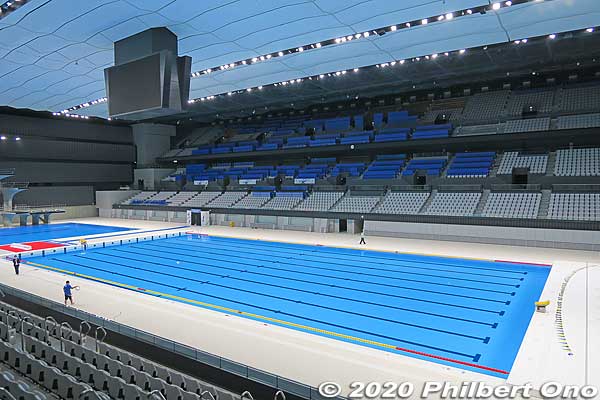
Capacity 15,000 for Tokyo 2020. Wheelchair seating is provided almost completely around the 2nd level concourse. The main pool’s floor can move up and down to change the pool’s depth.



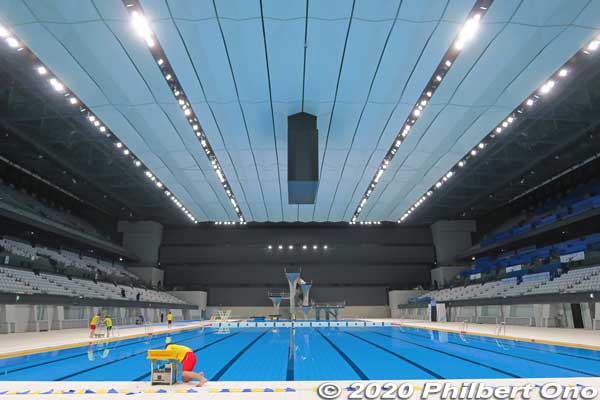
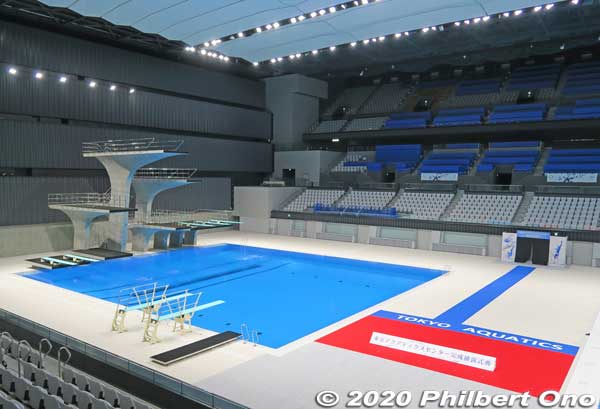
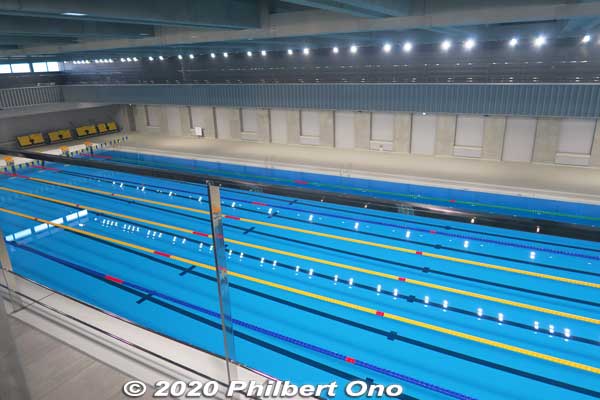
NOVEMBER 2020
November 8, 2020: Japan’s first international gymnastics competition since the pandemic is held at Yoyogi National Stadium. Top gymnasts from Japan, USA, Russia, and China compete.
November 10–30, 2020: Requests for Olympic ticket refunds from ticket holders are accepted. This is mainly for people who cannot attend the Games due to the postponed dates. Olympic ticket refunds are to be given from late December 2020.
November 16–17, 2020: IOC President Thomas Bach visits Tokyo and meets Prime Minister Suga to reaffirm their commitment to the Games. He also tours the Olympic Village and Olympic Stadium and gives high praise. TOCOG also studies ways and means to allow spectators into the Games.
Meanwhile, the Japanese public is not in the Olympics mood. Coronavirus is still around and news media is calling it the “third wave” for the autumn/winter.
November 18, 2020: TOCOG announces that Olympic marathon swimming at Odaiba will start 30 minutes earlier at 6:30 am as requested by the IF.
DECEMBER 2020
December 1, 2020: After maintenance and reinforcement work in Yokohama, the giant Olympic rings (15 meters high) on a floating barge are reinstalled at Odaiba Marine Park. The back of the rings were also painted in the Olympic colors. Lit up in white in the evenings.
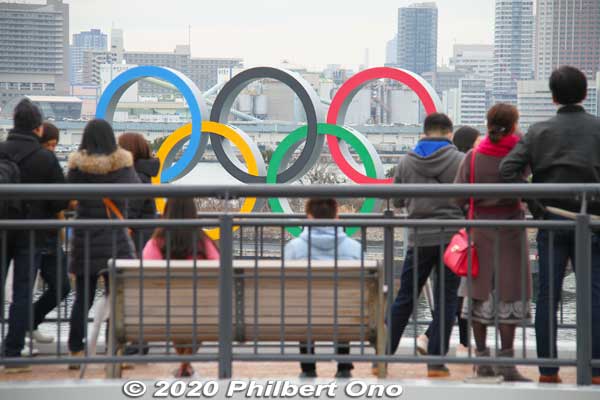
December 1–21, 2020: Requests for Paralympic ticket refunds from ticket holders are accepted. Paralympic ticket refunds are to be given from mid-January 2021.
December 2, 2020: Coronavirus Countermeasures Committee announces preliminary coronavirus safety measures.
December 3, 2020: TOCOG announces only 18 percent of Olympic ticket holders (810,000) have sought ticket refunds. Most Tokyo 2020 Olympic ticket holders continue to keep their tickets despite the postponement. Another sign of widespread (but quiet) support of the Games.
December 3–6, 2020: Postponed from April, the JAPAN SWIM 2020 national competition is held at Tokyo Aquatics Centre with top Japanese swimmers. Not an Olympic qualifier. The qualifier would be held in April 2021.
December 12, 2020: The creative planning team for the Opening and Closing Ceremonies headed by kyogen actor Mansai Nomura disbands. Former Dentsu advertising company executive Sasaki Hiroshi becomes the new team leader (resigns in March 2021).
December 20, 2020: WHO tells the BBC that, besides in the UK, a coronavirus variant has been found in Denmark, Holland, and Australia.
December 23, 2020: TOCOG announces only 21 percent of Paralympic ticket holders (200,000 of 970,000 tickets sold) have sought ticket refunds.
🔴 Late December 2020: All 68 domestic sponsors extend their Tokyo 2020 sponsorship for another year. The additional sponsorship income would total ¥22 billion.
Or go to year:
2011 | 2012 | 2013 | 2014 | 2015 | 2016 | 2017 | 2018 | 2016 | 2017 | 2018 | 2019 | 2020 | 2021 | Olympics | Paralympics | Venues | 2022–2023


